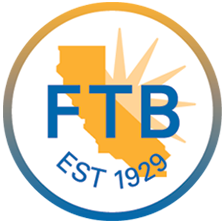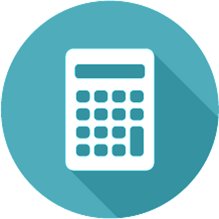
With stocks and interest rates fluctuating, retirement may seem unsustainable for many people. But when it comes to older adults, clinging to their job can be a bad thing rather than good. Obviously, you’ll still have money coming in, but how will this affect your physical or mental health?
In this economy, people are concerned about how to plan for retirement. As a result, they are panicking and clinging to their job, but in actuality, they can retire and be fine. Yes, just thinking about retiring can be scary for many people, particularly when it can last for 20 plus years.
There’s are upsides though to staying employed for as long as possible. In addition to the income, it also keeps you socially connected. Still, in some cases, retirement is the better option.
How To Plan For A Successful Retirement
Retirement planning doesn’t stop when you retire but rather it’s a multistep process that develops gradually over time. So, to have a successful retirement, you need to build the foundation that will fund it all.
How to start planning for retirement begins with considering your retirement goals and the amount of time you have to reach them. Next, you should think about the types of accounts that are best for retirement. Then, to enable your saved money to grow, you have to invest it.
The final step to the multistep retirement planning is taxes. Did you contribute to your retirement account and receive tax deductions for that money? If you did, then a substantial tax bill awaits you once you start withdrawing those savings. However, there are ways to minimize the retirement taxes while you’re saving for the future.
So, How Much Should You Save For Retirement?
Before you can start calculating the numbers on your retirement goals, you first need to know how much money you need to save. Obviously, this will depend on may factors, such as the age when you plan to retire and your annual income.
Unfortunately, there is no set rule about the amount of money to save. However, our retirement planning experts suggest saving at least 12 years of your pre-retirement annual income. Given that everyone’s circumstances are different, it’s best to calculate the most suitable retirement savings for your own situation.
While doing this, you should consider the following factors:
- Do you plan on starting a family? While having children is a central life goal for many people, it can also heavily impact your savings.
- Are you planning to buy a home? If you buy it later in life, you’ll have less time to pay off the mortgage. This means you’ll have a hefty mortgage payment that eats away at your retirement savings.
- If you want to do extensive traveling during retirement, you should know that it will eat away at your savings. Instead, you could move to a low cost of living state or country and still enjoy a high standard of living.
- Take advantage of different tax-advantage retirement accounts such as IRAs and 401(k) accounts.
After you have carefully considered these factors, here are the next steps for how to plan for a successful retirement:
01. Understand The Amount Of Time You Need To Achieve Your Financial Goal
Your current age and desired retirement age builds the groundwork for a successful retirement strategy. In short, the longer the time from your current age to retirement, the higher the level of risk that your portfolio can endure. So, don’t should risky investments if you only have 20 years before you retire because your portfolio may not recover.
Given these points, investments like stocks have generally performed better than other securities, such as bonds, over long time periods. The key word here is ‘long’, meaning more than 10 years.
02. Figure Out Your Retirement Spending Needs
When thinking about the required size of your retirement portfolio, you need to have realistic expectations about post-retirement spending habits. Some people think that their annual spending will amount to only 75% of what they spent before retiring.
This type of assumption is often unrealistic. Particularly if unforeseen medical expenses occur or if your mortgage has not been paid off. Plus, many retirees sometimes splurge on traveling or other bucket list items in their first years of retirement. For these reasons, to have enough retirement savings, the ratio should be closer to 100%.
03. Determine After-Tax Rate of Investment Returns
Once you determined the amount of time needed to achieve your goal and your spending requirements, focus on after-tax real rate of return. This must be calculated in order to assess the practicability of the portfolio producing the needed income.
Investment returns are generally taxed, depending on the type of retirement account you hold. Consequently, the actual rate of return must be calculated on an after-tax basis. But knowing your tax status when you begin to withdraw funds is a critical component of the retirement planning process.
04. Keep Abreast of Estate Planning
A well-rounded retirement plan also includes estate planning. And each aspect requires the expertise of different professionals, such as accountants and lawyers. Life insurance is also another key step in retirement planning as well as estate planning. Having both of these ensures that your assets are distributed as you specify and that your loved one don’t experience financial hardship after your death.
What Age Is Considered Early Retirement?
While 65 is generally considered early retirement, for social security, you can start collecting retirement benefits as early as age 62. However, you will not receive full benefits as you would if you wait to collect them at the full retirement age of 66 and 10 months.
Final Thoughts
More than ever, the responsibility of how to plan for retirement is falling on individuals. Particularly in the private sector, few employees can count on their employers to provide a defined benefit pension. The Ray Group specializes in retirement planning. Schedule a meeting today to learn about the different ways you can structure your retirement.
You may also enjoy reading: How Outsourced Accounting Services Can Help Your Business





